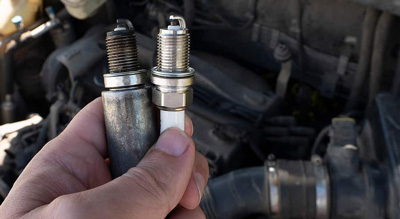How to Read Spark Plugs for Tuning
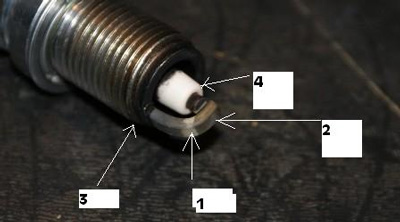
To read spark plugs for tuning, you do not require any professional degree in mechanics. It is also not too effortless either as there are many sections of the plugs included for reading.

Therefore, to read them out, you need to have a basic knowledge of particular issues and their indications. To get a brief understanding, keep reading below!
So, How to read spark plugs for tuning?
Spark plug reading in motorcycle
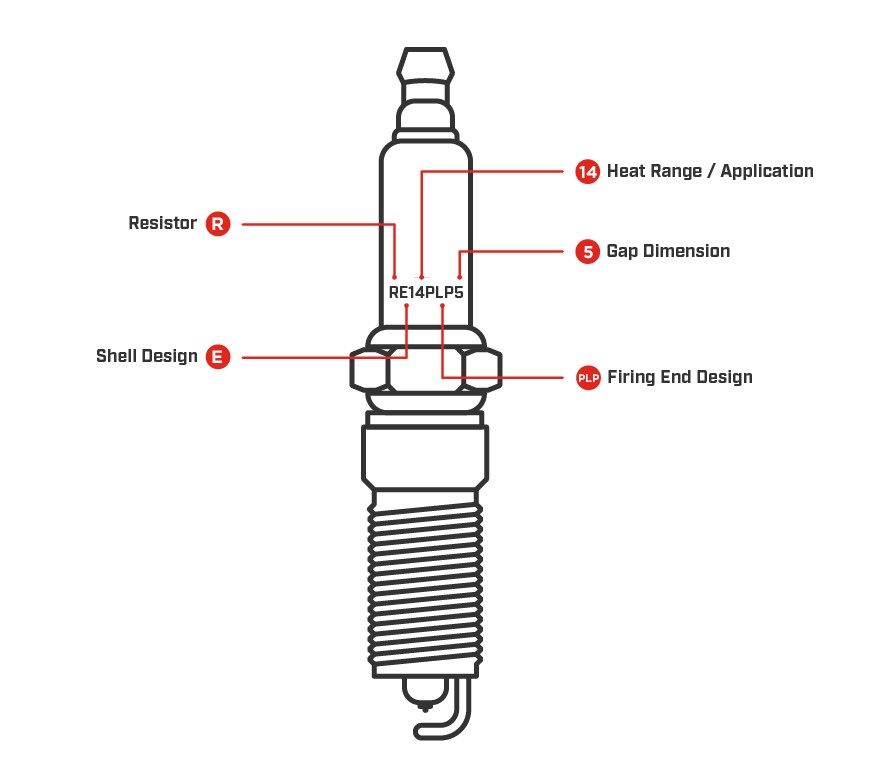
You can easily read and diagnose your motorcycle’s spark plugs in their running condition in an instant! Some of the basics are:
- If you see the spark plugs black and oily at the valves or pistons, then know they got oil-fouled.
- Black and sooty spark plugs denote rich engine running condition
- Too lean spark plugs will show white or no color on them
How do you read a lean or rich spark plug?
To read a spark plug and identify whether it is lean or rich, start by removing the spark plug from the engine. Then use your eyes or a flashlight to inspect the spark plug for a better look. If the spark plug looks clean, light-colored, and free of deposits, it is likely a lean spark plug. This means there is insufficient fuel and too much air in the engine.
How do I know if my spark is strong enough?
Here’s a rundown of some of the best ways to check your spark’s strength:
- Inspect the spark plug: Start by checking the spark plug itself. If the electrode insulation is worn and the center electrode is chipped or damaged, it could indicate a weak spark.
- Listen to the engine: If your spark is weak, your engine may not be running optimally. Listen carefully; if you hear knocks and misfiring, chances are your spark isn’t strong enough.
- Check the air-fuel ratio: Next, you should check the air/fuel ratio to ensure it’s appropriately balanced. If it’s too rich (too much fuel about the air) or too lean (too much air about the fuel), it could cause a weak spark.
- Check your timing settings: Timing settings can have a big impact on the power output of an engine. If the timing is off, it’s likely to be causing the spark to be weak.
- Check the distributor cap: If your distributor cap is worn or damaged, that could be the cause of a weak spark. Examine the contacts; if pitted or corroded, it’s time to replace the cap.
How to read spark plugs for tuning
First, you need to remove the spark plugs from the engine and inspect them. The most important parts are the electrodes and the gap between them. Your engine won’t function properly if the gap is too large or too small. If the gap is correct, the electrode will be clean and free of deposits.
How to read spark plugs for tuning 2 stroke
1. Use a trusted brand
Although all spark plugs are virtually the same, you should only use a trusted, name-brand spark plug for the best performance.
2. Replace spark plugs regularly
It’s important to replace spark plugs on your 2-stroke engine regularly. Not only will this help increase performance, but it can also help minimize wear and tear on your engine and ensure the spark plug readings remain accurate.
3. Look for signs of wear
Look closely at your spark plugs for signs of wear and tear. This includes discoloration, burnt plugs, and other signs that your engine isn’t running optimally.
4. Examine the plug gap
The plug gap is the distance between the electrodes. It’s essential to ensure it’s the correct size for your engine, as this can affect engine performance and spark plug readings.
5. Clean the spark plug
If your spark plug is dirty or covered in oil, cleaning it properly before using it is essential.
Is it better to run lean or rich?
Generally speaking, running lean means minimizing costs and maximizing overall efficiency. For many businesses, this translates to reducing non-essential expenses, minimizing risks and conserving capital.
Is backfiring lean or rich?
Backfiring can be caused by either a lean or a rich fuel mixture. In both scenarios, the mixture’s fuel-to-air ratio is too high or too low. When the ratio is too low, less oxygen is available to combust the fuel, resulting in the unburned fuel burning in the exhaust and subsequently producing a loud popping or banging sound, which is the backfire.
What is the correct air fuel ratio for hard acceleration?
The correct air-fuel ratio for hard acceleration is typically between 12.8:1 and 13.2:1. This ratio is crucial for achieving the optimal performance of your vehicle when accelerating.
How do you know if car is running rich?
If your car runs too rich, you may notice a strong smell of fuel from the exhaust pipe or a black, sooty residue around the tailpipes. Other indicators to look out for include poor engine performance, poor fuel mileage, and hesitation when accelerating.
What are the symptoms of a rich fuel mixture?
Some of the symptoms of a rich fuel mixture
1. Black Exhaust Smoke
Recognizing the tell-tale signs of a rich fuel mixture is key to recognizing the problem and allowing your mechanic to implement a solution.
2. Poor Fuel Economy
One of the most common symptoms of a rich fuel mixture is bad fuel economy. When there is too much fuel in the combustion chamber, it can lead to your engine misfiring or running inefficiently, both of which will drastically reduce the number of miles your vehicle turns per gallon of fuel.
3. Abnormally High Idle Speed
If your engine normally idles around 800 to 1000 rpm and suddenly starts to idle between 1,500 and 2,000 rpm without any noticeable changes, then you could have a rich fuel mixture.
4. Difficult Starting
When the excess fuel burns off when you go to start your vehicle, it can cause pre-ignition, which is marked by a “knocking” sound coming from your engine followed by the engine stalling.
Why do I smell strong exhaust when idling?
The following are some of the more common reasons why you might smell strong exhaust when idling:
- Broken exhaust system components: Exhaust systems are complex, and they’re comprised of several parts that wear out over time. The most common component to fail is the catalytic converter.
- Faulty or blocked air filter: Most cars have an air filter to help clean the air coming in to the engine. If this air filter is faulty or blocked, it can cause a build-up of emissions in the engine, leading to a strong exhaust smell when idling.
- Undetected problems in the emission control system: If there’s anything wrong with the emission control system, it may not be picked up by the diagnostic machines and cause the engine to continue emitting more exhaust fumes when the car is idling.
What are the symptoms of a lean fuel mixture?
- Rough Idle: A rough idle is one of the first symptoms of a lean fuel mixture. When too much air mixes with too little fuel, the engine is forced to work harder to keep the engine running, resulting in an erratic, choppy idle.
- Low Power and Acceleration: Too low a fuel mixture will also cause your vehicle to experience a decrease in power and acceleration.
- Poor Fuel Economy: Poor fuel economy is another symptom of a lean fuel mixture. Since too much air enters the intake, the engine must burn more fuel to combust, resulting in wasted fuel.
- Reduced Engine Performance: A lean fuel mixture can also negatively impact your engine’s overall performance.
Spark plug reading 101
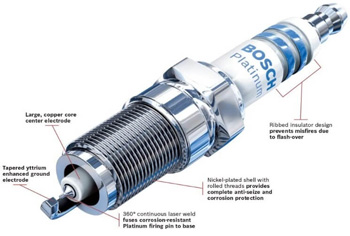
Before the spark plugs die, they give you some valid warnings along with some physical deteriorations of themselves. To read them, you need to know what sign is a specific outlook if giving.
Such as, rusty deposits on them denote head-gasket leak or crack block.
A broken electrode/ tip can sign the worst physical friction with the piston or any concrete debris. Lastly, burnt spark plugs denote overheating or worn rings.
RELATED SPARK PLUGS ARTICLE(S)-
- How to tell if a spark plug is bad by looking at it
- What causes bad spark plugs
- Bad spark plug sound
- Symptoms of bad spark plug wires
- What happens when spark plugs go bad?
- Bad spark plug symptoms motorcycle
- Best Spark Plugs for 5.3 Vortec
- What does a bad spark plug look like
- What heat range spark plug should I use
FAQ
How do you read a lean or rich spark plug?
Too rich spark plugs will look dark brown or black. It reads, the longer your car has been used, the darker it got. It shows your vehicle’s engine is running too rich. In contrast, too lean spark plugs look the opposite of too rich. So, the spark plugs will look whitish or have no color at all.
How do you read a spark plug timing?
You can read the changing metal color on the spark plugs to know about their timing. The ignition timing is readable towards the top tip of the plug, and the end tip indicates maximum timing.
What do the numbers mean on NGK Spark Plugs?
The numbers on NGK spark plugs are the heat rating numbers. The higher the number is, the heat dissipation is lesser. A lower number indicates more heat dissipation and indicates much heat. The spark plugs use a certain amount of thermal heat to work.
What Colour should spark plugs be?
A good mixture spark plug that works perfectly fine should appear to be lightly tanned brown. Generally, it is the color that every well-performing spark plug should have. If the too black or too white color is acquired, it means the spark plugs are troubleshooting in some form.
What a good spark plug looks like?
A fresh spark plug working with optimum temperature and functioning has a slightly tan-brown color on them. These colored plugs show your vehicle’s engine is running smoothly and perfectly without any issue. The tanned brown color appears as the spark plugs start to lose their original color with time without hampering their efficiency
How do I know if my spark plug is misfiring?
When the spark plugs misfire, you will face a shaky start of the engine with rough idling. The engine will also eliminate double the exhaustion gas with misfired spark plugs and much slower, jerky acceleration. Lastly, the engine will start eliminating weird rattling noises, too, indicating things are getting worse.

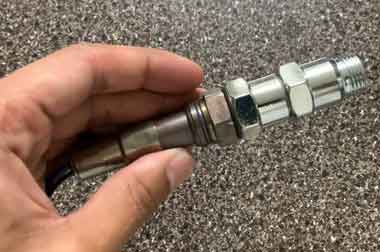
![Can Bad Spark Plugs Cause Knock Sensor Code? [Answered]](https://torqueadvisor.com/wp-content/uploads/2021/06/Can-Bad-Spark-Plugs-Cause-Knock-Sensor-Code.jpg)
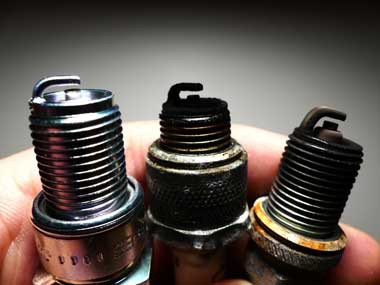
![Best Spark Plugs for Harley Davidson [Reviews & Guide] in 2023](https://torqueadvisor.com/wp-content/uploads/2021/02/Best-Spark-Plugs-For-Harley-Davidson-1.jpg)
